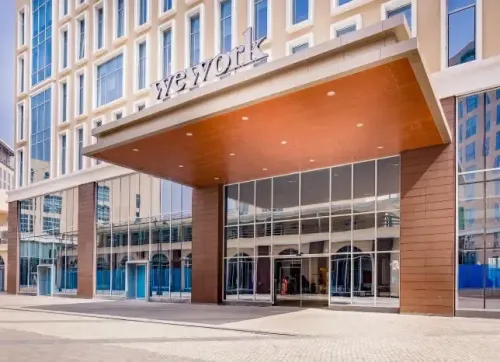Is India's Office Leasing Outpacing Supply for the Sixth Quarter?

Synopsis
Key Takeaways
- Office leasing has outpaced supply for six consecutive quarters.
- Net leasing in Q3 CY25 increased by 31% year-on-year.
- Vacancy rates have dropped to 14.2%.
- Bengaluru has the lowest vacancy rate at 9.2%.
- The technology sector dominates leasing activity with a 31% share.
New Delhi, Oct 17 (NationPress) India’s commercial real estate sector experienced a significant boost in Q3 CY25, as office leasing consistently surpassed supply for the sixth consecutive quarter, according to a report released on Friday.
Net leasing surged by 31 per cent year-on-year, reaching 15.9 million sq. ft. in Q3 CY25, while completions rose by 44 per cent YoY to 13.6 million sq. ft., leading to a vacancy rate of 14.2 per cent, a reduction of 240 basis points compared to the previous year and a 60 basis point decrease from the last quarter, as detailed in the report from Nuvama Institutional Equities.
Nuvama projected annual completions of 50–54 million sq. ft. for CY25–26, although some projects may face delays. The report anticipates a modest decline in vacancy levels in the medium term, with a predicted acceleration in annual rental growth.
Gross leasing increased by 5 per cent sequentially to 22.3 million sq. ft., marking the eighth consecutive quarter of absorption at or exceeding 20 million sq. ft. Rental prices rose across all major cities, reflecting an increase in pricing power for developers and landlords.
Bengaluru maintained the lowest vacancy rate at 9.2 per cent, while Hyderabad recorded the highest at 22 per cent. The Mumbai Metropolitan Region (MMR) saw vacancies decrease to 10.6 per cent—the lowest since 2015. The NCR region reported its lowest vacancy rate since 2012 at 20.2 per cent.
The technology sector constituted 31 per cent of leasing activity, leading the market, followed by global capability centres (GCCs), which accounted for 38 per cent of gross leasing during the quarter. Bengaluru was at the forefront of GCC activity, making up approximately 38 per cent of transactions. Although the share of domestic occupiers slightly dropped to 46 per cent in Q3 from 52 per cent in Q2, demand from multinational companies and global capability centres remained strong.
The brokerage firm believes that financially robust developers are solidifying their market presence as weaker competitors lose ground. Developers with extensive rental portfolios are best positioned to capitalize on this strong demand for office space, according to Nuvama Institutional Equities.









